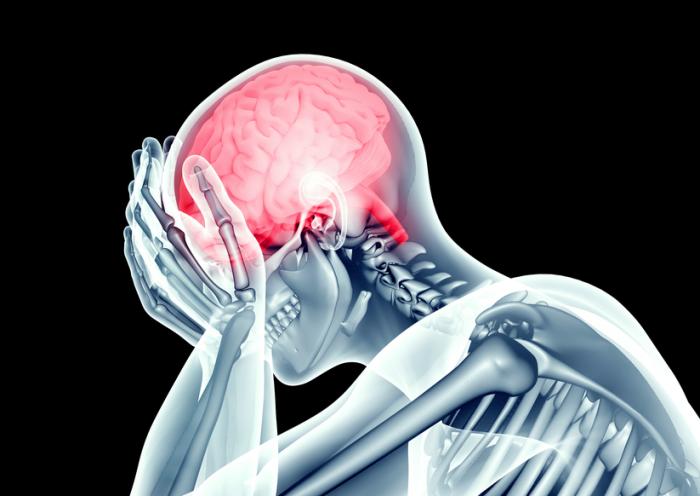Source: Thailand Medical News Oct 24, 2019 6 years, 1 month, 1 week, 5 days, 22 hours, 17 minutes ago
Stroke and
Aneurysm are two terms are often used interchangeably but in actual fact they are two distinct medical conditions. While most are aware that a
Stroke is the life-threatening medical condition that effects the brain, many are not be aware of what distinguishes it from an
aneurysm.
Globally, about 870,000 people are affected per year by
Strokes and
Aneurysms, of which about 395,000 cases normally resulting in deaths.

The distinct difference is that an
aneurysm is an abnormality that can lead to
stroke.
Aneurysm is defined as a structural anatomy, where there is an abnormality in the wall of the artery that will give you a bulging sack and the blood will leak outside the artery and into the brain. Whereas a
Stroke is a syndrome where there is damage in a certain part of the brain because no blood is going to that area.
.jpg)
There are a several factors that causes for an
aneurysm in the brain, ranging from head trauma to lifestyle-related complications caused by factors such as a lack of exercise and high blood pressure. Usually, between 0.1 and 0.5 per cent of the population can experience an
aneurysm in the brain.
There is a certain type of
aneurysm that can run in the family and hereditary and genetic based but these are very rare and mainly affect people from African and Hispanic ethnic populations.
If a patient has had an ischemic
kground-color:#FFFF00">stroke, they are normally prescribed a blood thinner and doctors will try to open the artery by giving a thrombolytic agent.
.jpg)
High blood pressure is a major risk factor for forming an
aneurysm and bleeding in the brain and 90 per cent of
aneurysm cases are caused by it.
Smoking is one of the major risk factors. Smokers have also been found to be more at risk than non-smoking patients. There are certain products in cigarette smoke that can cause damage to the
arteries and cause weak points where an
aneurysm can form.
Stroke are generally categorized in two ways. There are two sub-types of stroke, an ischemic
stroke and a hemorrhagic
stroke.
Ischemic
stroke accounts for 80 per cent of all strokes and occurs as a result of a blockage of the artery in the brain. A hemorrhagic
stroke is a rupture of the artery.
Both
stroke and
aneurysm carry the same three main symptoms.
A) Patients will report feeling acute and sudden, thunderclap headache.
B) Patients can fall into a coma following a bleed in the brain.
C) The third symptom is that patients will experience severe neck pain.
If an individual has an intact
aneurysm, the abnormality may produce symptoms such as pain around or above the eye, vision issues as well as headaches and difficulty with thinking.
In cases of
stroke, patients can also experience issues with their vision as well as a weakness and problems with balance. One of the other well-known symptoms of stroke is a numbness or sense of tingling on one side of the body or face.
If it is suspected that a patient is exhibiting the signs and symptoms of
stroke or
aneurysm, they will usually be sent for an MRI or CT scan.
Aneurysms can be a life-threatening condition and there are high rates of mortality, particularly in the first few days of treatment. Physicians usually treat patients with surgery or vascular intervention.
One treatment involves endovascular coiling with the use of a small, titanium coil. The aim of the procedure is to block blood flow to the
aneurysm. This technique is minimally invasive and does not require an incision in the head.
Alternatively, a surgeon can opt to perform an operation on the patient. During open-skull surgery, the surgeon will clip the neck of the
aneurysm. With
aneurysms, physicians do not prescribe aspirin or blood thinners for
aneurysm as the risk of a bleed is very high.
If an individual has had an ischemic
stroke, physicians will prescribe a blood thinner and will try to open the artery by giving a thrombolytic agent, which is sometimes called a blood clot buster, which opens the artery.
In the less common cases of hemorrhagic
stroke, which only accounts for around 20 per cent of
stroke cases, surgery may be required to repair the blood vessel where the rupture occurred.
Thailand Medical News advocates maintaining a healthy lifestyle to reduce the risks of
stroke and
aneurysm and recommends individuals visit a specialist if they experience symptoms. Exercise, movements, eating less meats and fats and a more plant-based diet along with taking doses of Aspirin (ie 81mg) or Vitamin E supplements but only after consulting a doctor and also making sure that one does not have high blood pressure are all key to ensuring that one has a lesser risk of developing either a
stroke or
aneurysms.

.jpg)
.jpg)